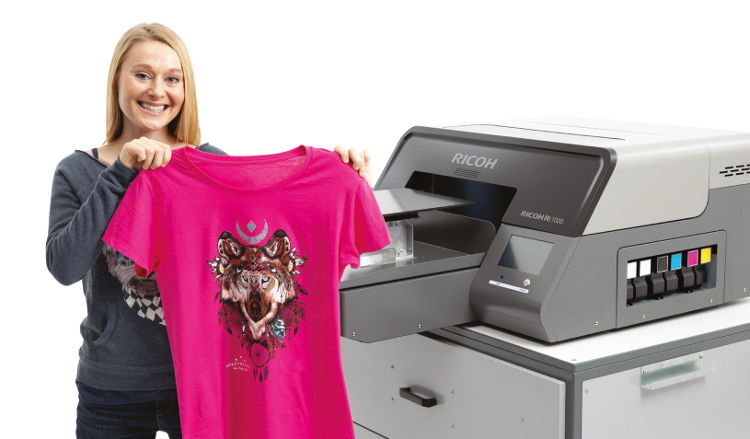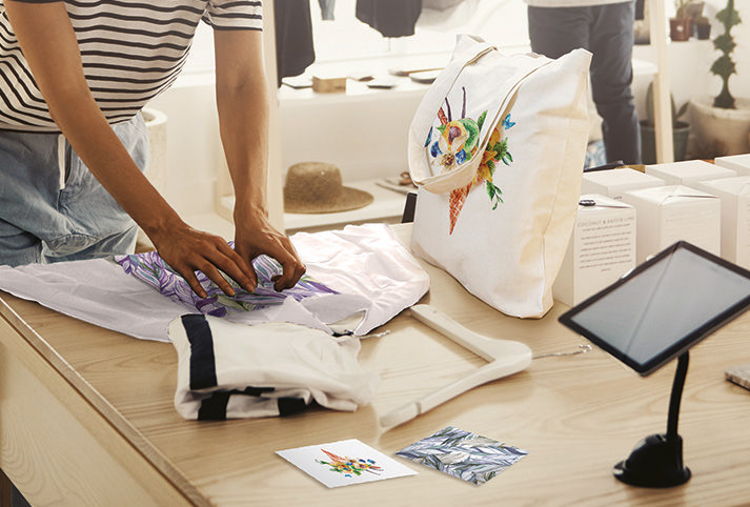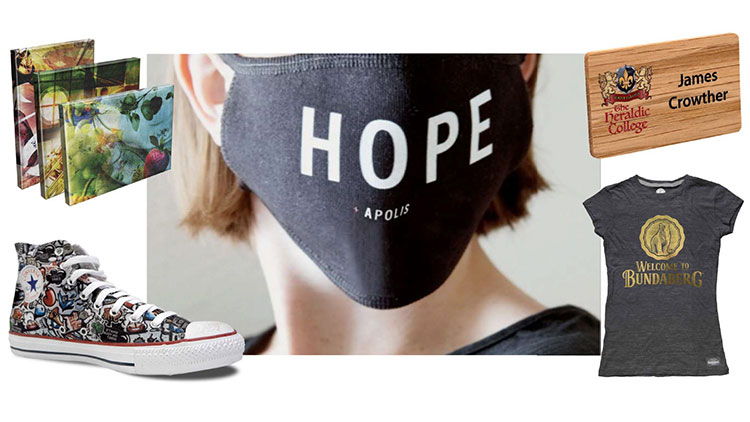The promotional goods market is creative and varied, covering everything from luxury corporate gifts to cheap-and-cheerful giveaways. But as the sector gets busier, and the events calendar recovers from a fallow period, it's essential that businesses in this market work smarter.
Textile applications and direct-to-garment (DTG) technology could be a profitable area to explore. Wearable items, like T-shirts and sweatshirts, make up a big share of the promotional and personalised goods market, 31%. Bags comprise a further 8% and textiles 3%, meaning businesses could access almost half of the available work with the right textile-printing systems.
When you consider the size of the promotional and personalised goods sector, the potential profits are hard to ignore: around €57 billion retail revenue worldwide in 2017. Promotional products - that is, goods purchased for marketing purposes mainly by schools, sports teams, banks, non-profits and so on - make up 91% of the market. Currently, these are usually produced with analogue print processes.

The remaining nine per cent is personalised products, purchased mainly by small businesses and consumers for gifts and for celebration purposes - commemorative T-shirts, for example. Importantly, this piece of the market is mainly catered for by digital print and has a Compound Annual Growth Rate (CAGR) of 10%. In comparison, the analogue-heavy promotional products market, although bigger, has a CAGR of 2%.
The personalised products sector, and the digital textile printing technology designed for these applications, therefore offers significant investment potential. Digital textile printing, and especially DTG, meets the needs of today's consumers and, crucially, print businesses. It's more agile and versatile, allowing short and single runs, and lots of design options.
In fact, the Keypoint Intelligence industry forecast, using data from the 2018 FESPA print industry census, discovered a raft of advantages. When asked, 'Which DTG printer attributes or features are most interesting to you?', 53% of respondents said faster print speeds, 48% said white ink, 33% said more colours, and greater production capacity was referenced by a further 33%. Some 29% found automated garment loading and unloading of interest, and the same percentage liked the ability to print a whole garment (it's possible to print over some fastenings). Analogue can't compete on these features for truly personalised textiles.
That's not to say there's not a place for screen-printing; analogue and digital can happily work side by side to create a fantastic complementary service. Indeed, the poll found 27% of respondents were attracted to the potential to mix analogue and digital print. Some DTG printers are really compact and very easy to operate, so they can fit neatly into a workflow from day one.
For example, the Ricoh Ri 100 has a small footprint and simple print workflow - comparable to standard desktop printer - but with lots of creative potential. You can print colourful designs, bold slogans and even accurate photographs directly to T-shirts, sweatshirts, shopping bags, cushion covers and more, in just minutes. It's compact and fast enough to offer a portable, reliable solution for events and exhibitions, or as a permanent addition to a retail shop or print business. The Ricoh Ri 1000 is the next level up: a production DTG printer that can print a full colour image on a light-coloured T-shirt in just 28 seconds. For darker colours, users can print a base layer of white ink to create a blank canvas. It's compatible with polyester as well as cotton and quick-change platens allow switching between different garments fast, for a practically non-stop workflow.
These Ricoh DTG systems also offer sustainability benefits - thanks to their eco-friendly water-based inks - meeting another requirement of the modern marketplace. The direct-printing method also means no waste transfer materials, which additionally reduces consumables costs. They've been engineered by a print specialist with decades of manufacturing experience to provide maximum potential in a small package, giving businesses a fast, straightforward way to start selling wearable personalised products. It's a fun, creative market that could be potentially lucrative for your business.
Now is a great time to invest in this equipment and explore the opportunities it presents. Right now you could even grab those opportunities for free: Ricoh is giving away a Ri 100 solution to one lucky business. Go to www.winwithricoh.com to learn more about Ricoh's DTG range and to enter the competition.
Authored by Nick Macfarlane, direct-to-garment sales specialist at Ricoh UK
For more information on Ricoh's range of DTG printers, please visit: https://products.ricoh.co.uk/direct-to-garment
For further information on Ricoh wide-format products and services, please click here






